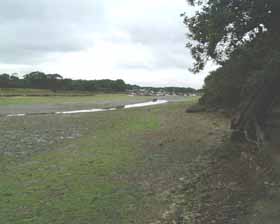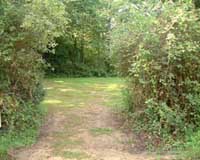
MY STUDY
LIFECYCLE GLOSSARY HELPING GLOW-WORMS WHERE TO FIND THEM MY STUDY
THEIR HISTORY MY SURVEY LINKS TO OTHER SITES ABOUT ME MISCELLANY SNAILS

Corfe Scout Camp, on the Isle of Wight, is great for glow-worms, and I did a fair amount of my study there. Females displayed around the edges of the paths and in clearings like the one above. Larvae almost certainly lived and fed in the hedgerows between clearings. It was here that I watched the female below, and saw it mate, retreat into it's daytime refuge of a mouse-hole, and lay eggs during the night hours. The first photo shows it retreating, maybe via a hole bored by a solitary bee, and the second photo shows the mouse hole uncovered. Eggs were laid along the mouse's tunnel, and the female probably died almost immediately afterwards.
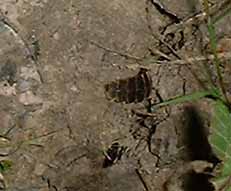
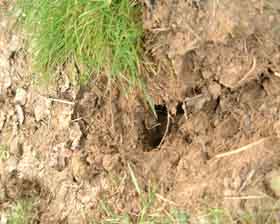
The problem at Corfe was that some of the Scouts and Cubs were collecting the little "night lights" in jars, and when the lights failed, they assumed that the glow-worms were dead, and they were cremated on the camp fire! Even those that were released would have faced two problems. Firstly, they would have been released away from their chosen egg-laying site, display site, and day-time retreat. Secondly, they would have been exhausted and stressed by the handling, reducing their already small reserve of energy. I felt that this unintentional cruelty to the glow-worms was due only to their ignorance of the creature, and so I decided to do what I could to educate children everywhere.
I made further studies of glow-worms on other sites, trying to discover exactly what encouraged and endangered them on the sites, and learn more about their behaviour. The more we learn about any creature, the more we are able to help them. Glow-worms are usually found on sites that have not been disturbed, such as church yards and castle grounds. Below is one of the church yards that I often visited. The land is chalky, providing calcium for the snails' shells, the flowers would provide food, especially on the compost heap shown, and the stones provide cool, damp hiding places for both snails and glow-worms.
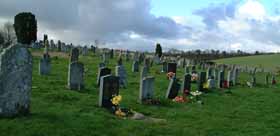
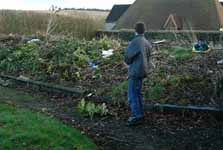
Glow-worms also inhabit areas near the sea. This next picture shows a salt marsh on the Isle of Wight that had females displaying round its edges. The tide is shown out in this photo.
